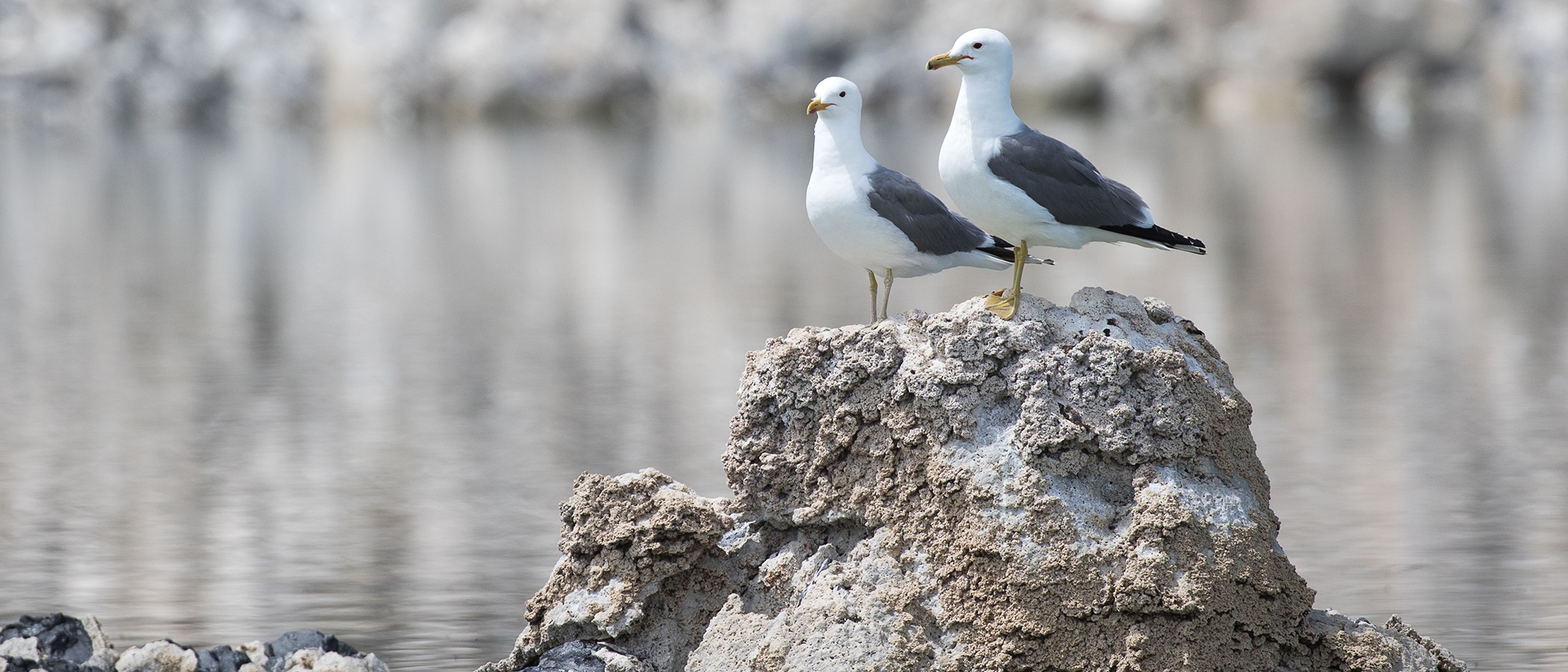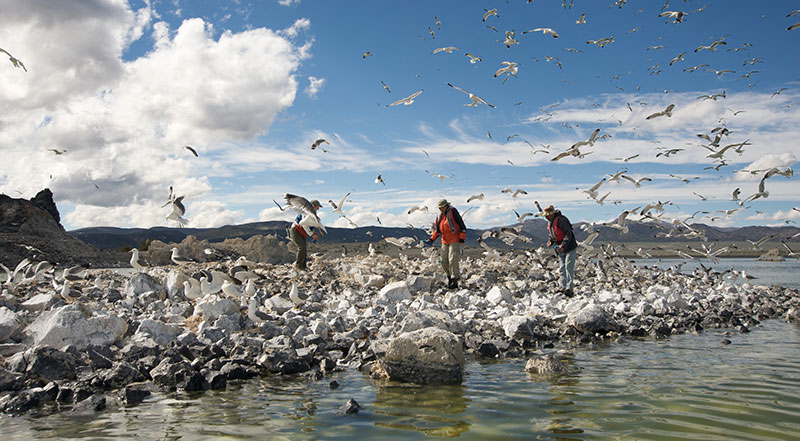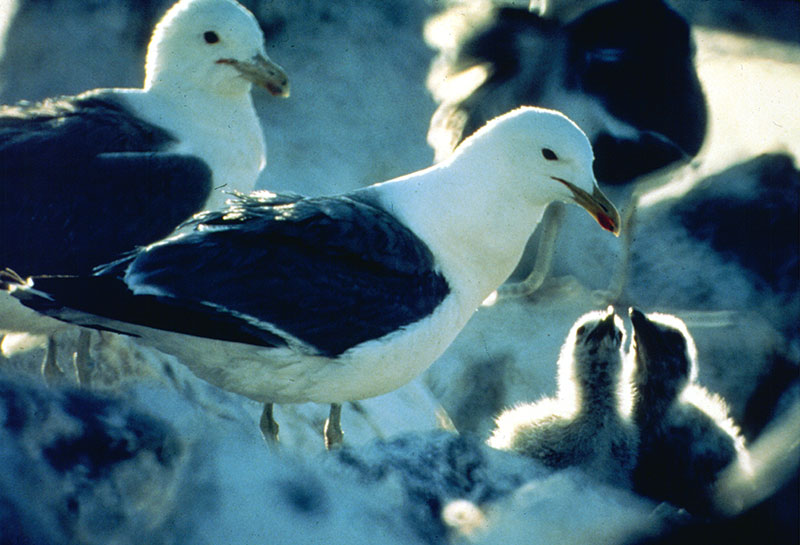
This post was written by Erik Lyon, 2013 Project Specialist.
You are on a rocky volcanic island surrounded by an alkaline sea. Your only protection from the high-desert sun is your khaki-colored Mono Lake Committee logo bucket hat. It’s also your only protection against the frenzied California Gulls flying every which way and trying, as you suspect, to whitewash you with an airborne “splat!”
Three times a year, Kristie Nelson and Ann Greiner of PRBO Conservation Science lead a group of volunteers and assistants to Mono Lake’s islands to collect different information about Mono Lake’s nesting California Gull population. Starting in May, they count gull nests. In July, they return to count and band chicks. Finally, in early fall after the gulls have departed, they survey the chicks that have died—the “Mort Count“—to estimate how many successfully fledged. It’s harrowing work, but the data is critical for keeping track of year-to-year reproductive success of the colony. They spend the following autumn analyzing their wealth of data before releasing an annual report on the reproductive success of the colony.
The results of the data from 2012 are now in, and the findings are mixed. The population of nesting adults was slightly over 40,000, a huge step up from the 34,000 found in 2011—the record low since the study began. However, this number is still around 5,000 less than the 30-year average, and the average reproductive success was only 0.72 chicks fledged per nest, meaning that many pairs to initiate nesting did not successfully fledge young. So while the gull population climbed relative to previous years, the low reproductive success suggests that the upward trend is by no means a guarantee.
Another finding of note was the seven nests found on Negit Island itself, the gulls’ historical nesting site. When Mono Lake’s level dropped enough in the 1980s to expose a land bridge to Negit Island, they were left unprotected from terrestrial predators, especially coyotes. As a result the gulls moved to Mono Lake’s smaller islets in an attempt to nest safely. Though only a remnant of the former land bridge still exists today, California Gulls tend to nest in the same spot year after year, so they are slow to return to their original nesting ground. Nests have been found on Negit Island before, but it has never been permanently recolonized.
For more information, read the full report: Population Size and Reproductive Success of California Gulls at Mono Lake, California in 2012. Thank you to Kristie, Ann, and PRBO Conservation Science for their hard work year after year.
Top photo courtesy of Point Blue Conservation Science.


